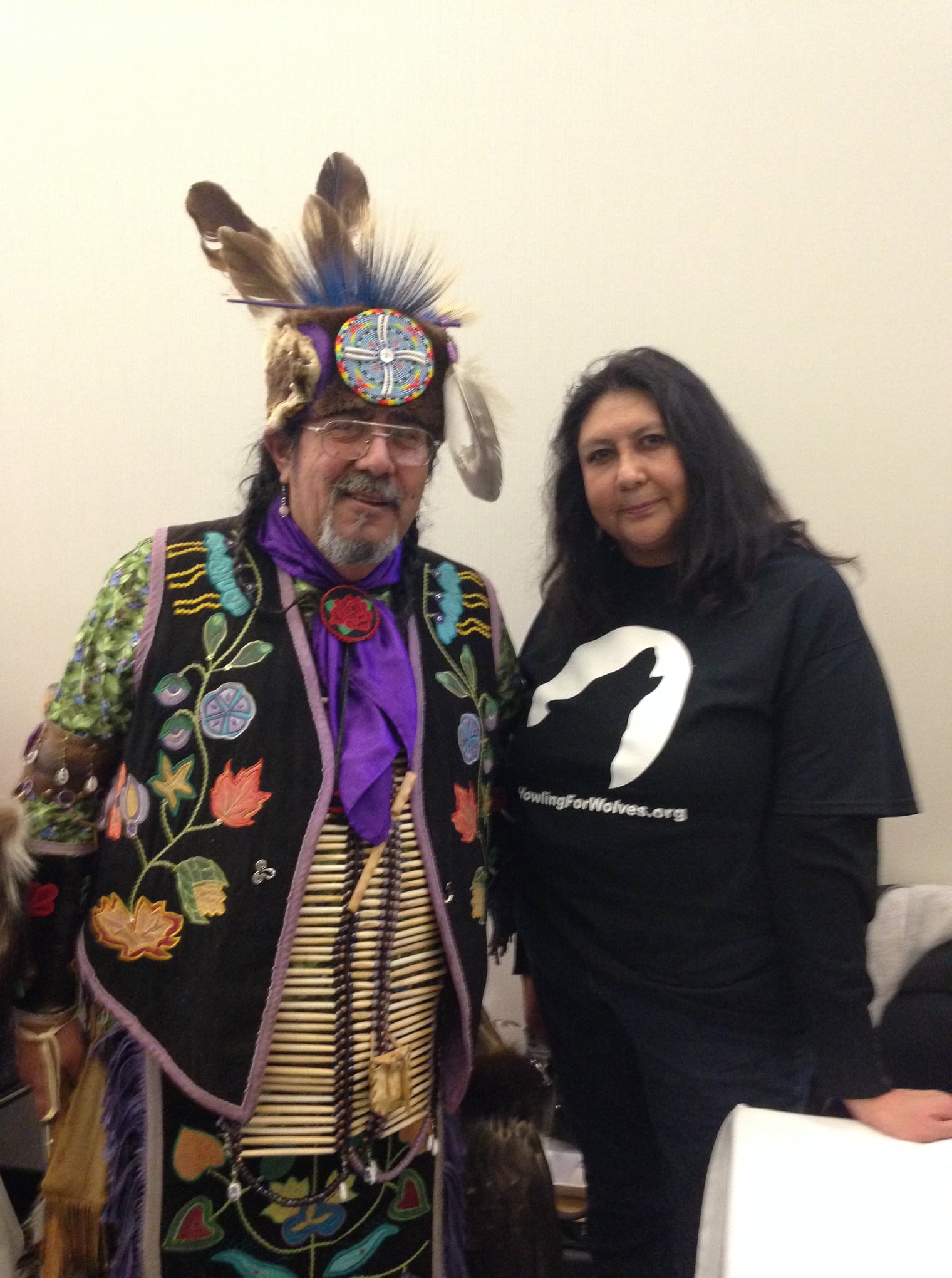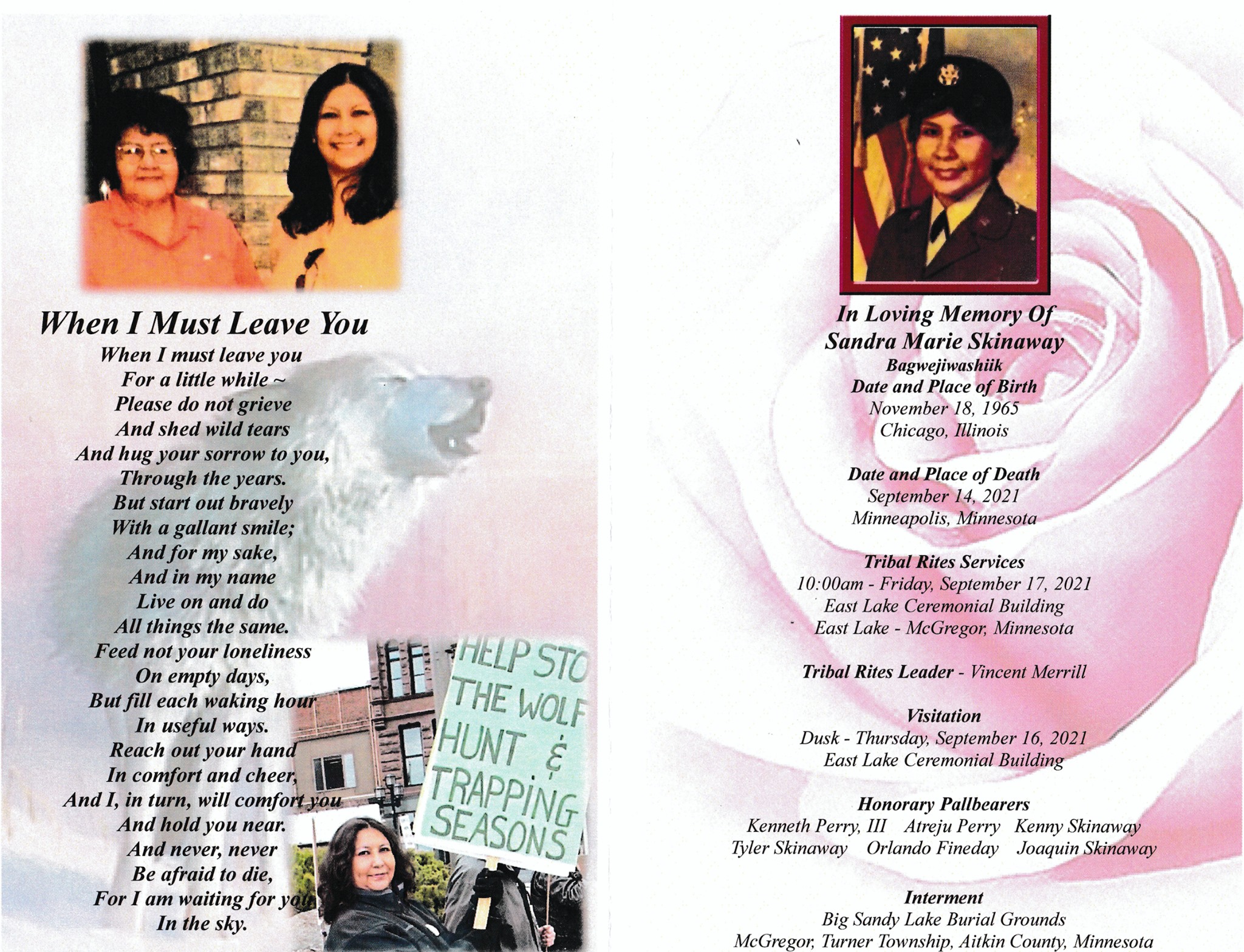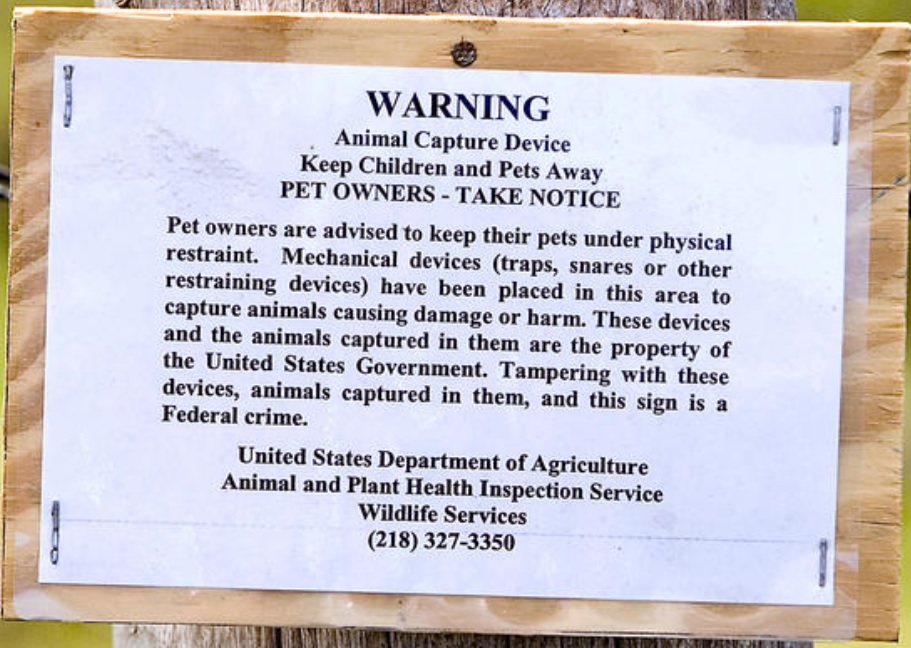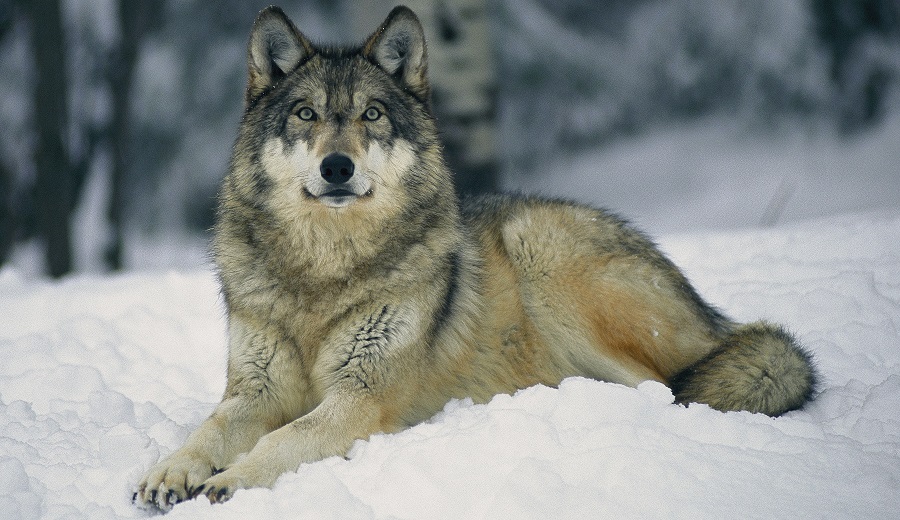WOLF PROTECTION TO IMPROVE PUBLIC & DEER HEALTH
By Dr. Michael W. Fox*
On November 16th,2018 House members of Congress, including Minnesota’s soon-to-be Governor Tim Walz, passed the bill, HR 6784, the "Manage Our Wolves Act" which, if passed in the Senate, will allow states to return to wolf trophy hunting and trapping and removes any opportunity for judicial review, which is a dangerous precedent. Ceding Federal protection under the Endangered Species Protection Act to State wildlife management has been opposed by scientists and conservationists and a large public constituency of wildlife protection. The livestock sector that supports wolf eradication is now recognized as one of the world’s major contributors to climate change and loss of biodiversity.
Wolves need to be protected and their numbers increased so the whitetail deer over-population and related health-problems can be rectified. Chronic wasting disease (CWD) in whitetail deer and other ungulates is spreading across the U.S., now reported in 22 states. While deer ranches can be one source of infection, seeking to manage a large deer population for recreational hunting---essentially wildlife farming---and winter feeding, coupled with predator control, especially of wolves, creates the perfect storm for the spread of CWD.
Outdoors reporter Dennis Anderson’s appeal (StarTribune March 9/18) to the legislature to limit the scourge of CWD in the state’s deer herd by ideally getting rid of deer and elk farms and at least making them secure with double fencing and regular inspections should not fall on deaf ears. A variant of the prions that cause chronic wasting disease in deer, moose and elk across many states caused mad cow disease in the U.K., decimating the beef industry and resulting in brain disease in humans and some companion animals. According to researchers at The University of Texas Health Science Center at Houston (UTHealth), grass plants can bind, uptake and transport infectious prions which are single proteins that cannot be destroyed by typical “kill strategies” such as extreme heat or ultraviolet light. They discovered that even highly diluted amounts of the material can bind to the roots and leaves. From there, they fed the wheat grass to hamsters, which became infected with the disease. The team also found the infectious prion proteins in plants that had been exposed to urine and feces from prion-infected hamsters and deer.
The Bureau of Microbial Hazards (BMH), Food Directorate, Health Products and Food Branch, Health Canada posted on April 26, 2017 a Risk Advisory Opinion: Potential Human Health Risks from Chronic Wasting Disease because CWD has been transmitted to cynomolgus macaques (the non-human primate species most closely related to humans that may be used in research), through both the intracranial and oral routes of exposure. Both infected brain and muscle tissues were found to transmit disease.
The probability of transmission to cattle, sheep and goats and to humans consuming infected meats and crops from corn to cabbages contaminated by infected deer feces and urine is considerable and concerted action is called for at this time to prevent such a potentially catastrophic eventuality.
Against these research findings, what are the best strategies to control CWD for Minnesota and other State departments of natural resources, wildlife management and animal and public health? Clearly in Minnesota, high concentrations of deer encouraged by private land owners, deer farms and even the DNR for deer hunters in many zones across the state need to be ecologically managed. “Eco-health” is maximized by protecting optimal numbers of carnivore species, wolves in particular and cougars in other States that may have some immunity to prion infection, who cull weak and sickly deer and prevent high densities that can mean over-brazing and destruction of habitat.
Leading wildlife biologists cited by Tod Wilkinson in his December 11, 2017 Mountain Journal article “The Undeniable Value of Wolves, Bears, Lions and Coyotes In Battling Disease: Will The Fairy Tale Mentality Of Western States Against Predators Hamper Their Ability To Slow Chronic Wasting Disease”? are unanimous in recognizing the role of predators in controlling CWD. Their systematic extermination over the past two centuries especially by the livestock industry has facilitated the spread of this disease across the U.S. and Canada. In this article Kevin Van Tighem, a hunter and former superintendent of Banff National Park in Alberta’s Canadian Rockies opines, “I don’t know of a single credible biologist who would argue that wolves, along with other predators and scavengers, aren’t important tools in devising sound strategies for dealing with CWD.” Van Tighem says it can be rationally argued that wolves provide the best line of defense since they are confronting infected animals. So those States blessed with viable wolf populations need to recognize the role of these predators in ecosystem management and protect such large carnivores from human predation and maintain maximal wolf numbers to optimize deer and elk herd health rather than de-listing the wolf from Federal protection as an endangered species to allow trophy hunting, trapping and snaring.
Bovine Tuberculosis (bTB) in deer, transmissible to cattle, follows a similar pattern of high deer numbers. As Michigan State university veterinary epidemiology professor Paul Bartlett opines, “My conclusion a long time ago was
that if you raise deer like feedlot cattle they’re going to get a feedlot cattle disease.”
In addition to bTB white tail deer can also transmit other diseases to cattle and humans including Q Fever, Brucellosis and may infect cattle with EHD, epizootic hemorrhagic fever. Also, Leptospirosis, which causes reproductive failure, anemia, liver and kidney disease in ruminants and is typically shed in the urine of infected animals. People acquire the infection by oral ingestion and contact with contaminated urine, placenta, and fetal tissues. The organism can infect hosts through abraded skin. Salmonellosis, campylobacterosis, listeriosis, yersiniosis, cryptosporidiosis and giardiasis are acquired from deer by contact and accidental oral ingestion of fecal material from infected animals.
Surely it is time for all State and Federal wildlife agencies to implement ecologically sound wildlife management practices that improve deer health and not continue to put livestock and humans at risk from several diseases by maximizing natural biodiversity. This must include protection of wolves and other predators and not rely on human predation for a few weeks of hunting every year during the breeding season to limit deer population densities. Allowing the hunting and trapping of wolves will only make matters worse.
*The author lives in Golden Valley MN and is a veterinarian and author of The Soul of the Wolf. Website www.drfxvet.net







 USDA-APHIS kills wolves in response to confirmed livestock losses by baiting all the wolves in an area. There is no information obtained as to whether the baited wolves are “offending” wolves. Wildlife Services now kills 2-3 wolves per confirmed predation on livestock instead of 1-2 wolves killed per complaint 10 years ago. The fact that the Grand Rapids based Wildlife Services has used their budget because they are killing more wolves can be due to many factors including the fact that they are killing more wolves in response to each individual confirmed predation on livestock. In essence—they are a lethal first model instead of a lethal last model. Killing wolves leads can lead to more livestock killing. A program that seeks to reduce conflicts with livestock solely by killing wolves is counter-productive and risks repeating the mistakes of the 1800’s. Research has demonstrated that lethal responses to wolf predation on livestock is associated with more livestock lost the following year. This occurs up until so many wolves are killed (about 25% of the population) that ethey are no longer able to reproduce enough to show this effect. This is thought due to the destabilization of packs to such a point that they cannot hunt effectively or never have the opportunity to learn, resulting in a reliance on livestock as a food source.
USDA-APHIS kills wolves in response to confirmed livestock losses by baiting all the wolves in an area. There is no information obtained as to whether the baited wolves are “offending” wolves. Wildlife Services now kills 2-3 wolves per confirmed predation on livestock instead of 1-2 wolves killed per complaint 10 years ago. The fact that the Grand Rapids based Wildlife Services has used their budget because they are killing more wolves can be due to many factors including the fact that they are killing more wolves in response to each individual confirmed predation on livestock. In essence—they are a lethal first model instead of a lethal last model. Killing wolves leads can lead to more livestock killing. A program that seeks to reduce conflicts with livestock solely by killing wolves is counter-productive and risks repeating the mistakes of the 1800’s. Research has demonstrated that lethal responses to wolf predation on livestock is associated with more livestock lost the following year. This occurs up until so many wolves are killed (about 25% of the population) that ethey are no longer able to reproduce enough to show this effect. This is thought due to the destabilization of packs to such a point that they cannot hunt effectively or never have the opportunity to learn, resulting in a reliance on livestock as a food source. 